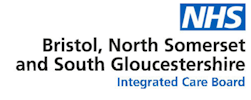

Arachnoid cysts are congenital or acquired cysts filled with CSF found in the brain or spine that are commonly incidental and asymptomatic. They are most commonly seen in the middle cranial fossa. Surgical intervention is rarely required and only required if the patient is symptomatic, i.e. seizures, weakness, hydrocephalus or cognitive impairment. When they are found in the spinal canal, they can cause signs and symptoms of myelopathy.
If there is uncertainty on CT imaging, an MRI is gold-standard for diagnosing an arachnoid cyst.
Cranial Arachnoid Cyst
All patients with an arachnoid cyst (symptomatic or asymptomatic) should be referred to the Neuro-oncology MDT.
If the patient is asymptomatic from an arachnoid cyst, it is likely no intervention or follow-up will be required.
If a patient is symptomatic and there are more immediate concerns, they should be referred urgently via Referapatient. Patients may be seen by the on-call team or re-directed to the appropriate MDT.
Spinal Arachnoid Cyst
If a patient is symptomatic from a spinal arachnoid cyst, or an MRI report mentions associated cord signal change, please refer them via Musculoskeletal Interface (MSKI) Service.
For asymptomatic spinal arachnoid cysts no referral is necessary however, if there are concerns, these cases can be referred to MSKI as above.
Efforts are made to ensure the accuracy and agreement of these guidelines, including any content uploaded, referred to or linked to from the system. However, BNSSG ICB cannot guarantee this. This guidance does not override the individual responsibility of healthcare professionals to make decisions appropriate to the circumstances of the individual patient, in consultation with the patient and/or guardian or carer, in accordance with the mental capacity act, and informed by the summary of product characteristics of any drugs they are considering. Practitioners are required to perform their duties in accordance with the law and their regulators and nothing in this guidance should be interpreted in a way that would be inconsistent with compliance with those duties.
Information provided through Remedy is continually updated so please be aware any printed copies may quickly become out of date.